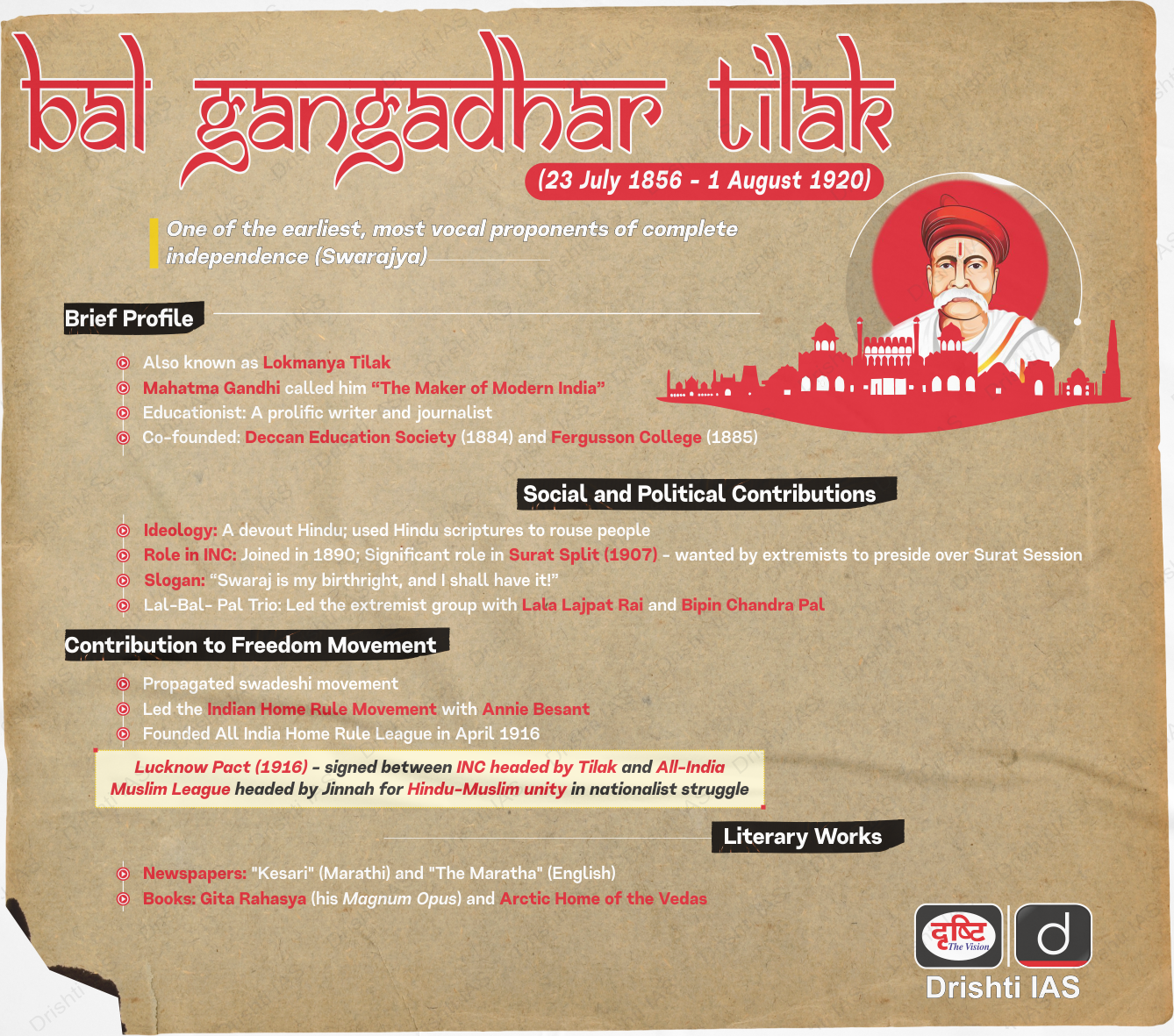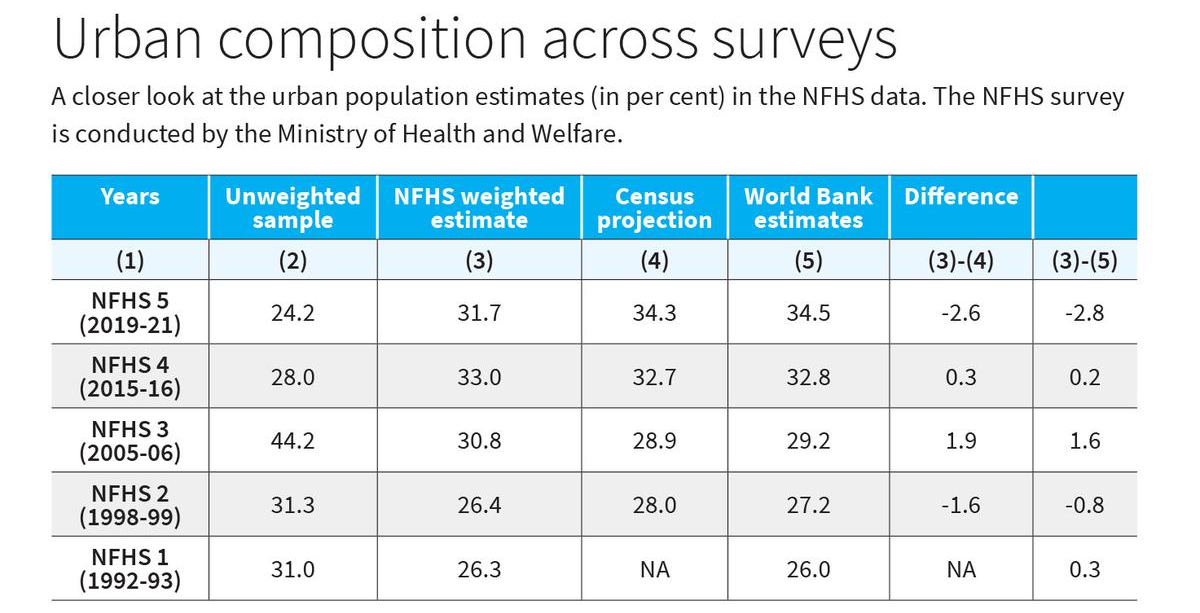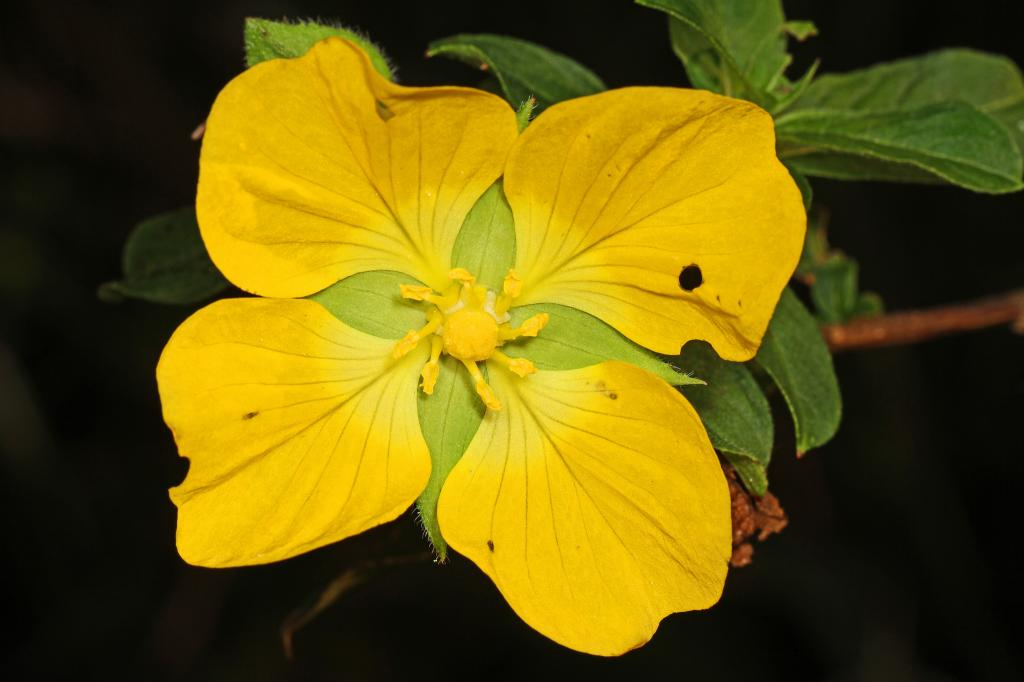Infographics
Economy
Credit Guarantee Scheme for Livestock Sector
For Prelims: MSMEs, Ministry of Fisheries, Farmers Producers Organizations (FPOs), Interest Subvention scheme.
For Mains: Economics of Animal-Rearing, MSMEs.
Why in News?
The Ministry of Fisheries, Animal Husbandry and Dairying has launched the first ever “Credit Guarantee Scheme” under Animal Husbandry Infrastructure Development Fund (AHIDF) to facilitate collateral-free credit for MSMEs in the livestock sector.
What are the Key Features of the Credit Guarantee Scheme?
- Objective:
- Strengthen credit delivery system and facilitate smooth flow of credit to Micro, Small & Medium Enterprises (MSMEs) engaged in the Livestock sector.
- Increase access to finance for un-served and under-served livestock sector, with a focus on first-generation entrepreneurs and underprivileged sections of society.
- Credit Guarantee Fund Trust:
- A Credit Guarantee Fund Trust of Rs. 750.00 crores have been established to provide credit guarantee coverage up to 25% of the credit facilities extended to eligible MSMEs by lending institutions.
- Interest Subvention:
- The scheme offers an interest subvention of 3% on loans obtained from Scheduled Banks or National Cooperative Development Corporation (NCDC).
- Borrowers can avail up to 90% of the total project cost as a loan.
What is Animal Husbandry Infrastructure Development Fund?
- The AHIDF has been set up as MSMEs and Private companies also need to be promoted and incentivized for their involvement in processing and value addition infrastructure.
- The AHIDF is a Central Sector Scheme under the Prime Minister’s Atma Nirbhar Bharat Abhiyan stimulus package of Rs.15000 crores for incentivizing investments in:
- Dairy processing and value addition infrastructure.
- Meat processing and value addition infrastructure.
- Animal Feed Plant.
- Breed Improvement technology and Breed Multiplication Farm.
- Animal Waste to Wealth Management (Agri Waste Management).
- Setting up of Veterinary Vaccine and Drugs Manufacturing facilities.
- Individual entrepreneurs, private companies, MSMEs, Farmers Producers Organizations (FPOs), and Section 8 companies are encouraged to invest in the Livestock sector through this fund.
UPSC Civil Services Examination, Previous Year Question (PYQ)
Mains
Q. Livestock rearing has a big potential for providing non-farm employment and income in rural areas. Discuss suggesting suitable measures to promote this sector in India. (2015)


Social Justice
Quick-Fix Water Management
For Prelims: Amrit Sarovar Mission, Atal Bhujal Yojana, Quick-fix Water Solutions
For Mains: Water Scarcity and related Steps taken, Water Resources, Conservation of Resources
Why in News?
Recently, India's increasing water stress has been met with a growing inclination towards quick-fix solutions by non-profits and civil society organizations.
- However, these quick fixes may not be sustainable in the long run. It's essential to examine these quick fixes carefully and ensure we adopt strategies that can last for the future.
What are Quick-fix Water Solutions?
- About:
- Quick-fix water solutions refer to immediate and often temporary measures implemented to address water-related issues, particularly in regions facing water scarcity or challenges in water management.
- Various Interventions:
- River Widening, Deepening, and Straightening: Modifying natural watercourses to increase water-carrying capacity.
- Water Harvesting Competitions: Encouraging communities to harvest rainwater and adopt water-saving practices.
- Limited impact without comprehensive water management strategies.
- Tree Planting Along Riverbanks: Stabilizes soil and prevents erosion.
- May not fully address larger water management issues.
- Quick Infrastructure Development: Rapid construction of water facilities like sewage treatment plants and water grids.
- Artificial Recharge of Aquifers: Injecting water into underground aquifers to replenish groundwater levels.
- Requires sustainable management to combat depletion.
- Desalination Plants: Converting seawater into freshwater to meet coastal water needs.
- Energy-intensive and expensive, making it less viable in some areas.
- Quick-fix Water Solutions Initiatives:
- Jalyukt Shivar Abhiyan:
- Maharashtra government initiative (2014) aimed to make the state drought-free by 2019 through river widening, deepening, and straightening, check dams, and desilting.
- Experts criticize it for being unscientific, ecologically damaging, leading to erosion, biodiversity loss, and increased flood risk.
- Water Cups:
- A competition initiated by a non-profit organization in 2016 incentivized Maharashtra villages to harvest water for drought-proofing.
- Critics question the validity and sustainability, as it overlooked water quality, groundwater impact, social equity, and maintenance mechanisms.
- Jalyukt Shivar Abhiyan:
What are the Challenges in Quick-Fix Solutions in Water Management?
- Environmental Impacts:
- Rapid interventions like river widening and deepening can lead to ecological damage.
- Erosion, sedimentation, and loss of biodiversity can result from hasty projects.
- Limited Community Engagement:
- Quick-fix approaches may lack adequate participation and consultation with stakeholders.
- Neglecting the social dimension can lead to resistance and conflicts.
- Funding Dependency:
- Relying on corporate social responsibility (CSR) funding can limit decision-making freedom.
- Prioritization of projects influenced by donor interests rather than community needs.
- Neglecting Groundwater Management:
- Focus on surface water solutions may overlook the critical role of groundwater.
- Groundwater recharge and management are crucial for sustainable water supply.
- Conflicting Programs:
- Some state projects may not align with community and environmental interests.
- Examples: riverfront development, centralized sewage treatment, massive water grids.
- Shift from Critical Engagement:
- A shift in mindset from in-depth analysis and understanding to a "techno-managerial approach."
- This means placing too much emphasis on technical knowledge and problem-solving, which can lead to overlooking important socio-economic and ecological aspects related to water management.
- A shift in mindset from in-depth analysis and understanding to a "techno-managerial approach."
What are the Government Initiatives Tackle India's Water Crisis?
- Amrit Sarovar Mission:
- Amrit Sarovar Mission launched on April 24, 2022, the mission aims to develop and rejuvenate 75 water bodies in each district as part of the Azadi ka Amrit Mahotsav celebration.
- The mission seeks to improve water storage and quality in local water bodies, contributing to better water availability and ecosystem health.
- Atal Bhujal Yojana:
- This scheme targets certain water-stressed areas in Gujarat, Haryana, Karnataka, Madhya Pradesh, Maharashtra, Rajasthan, and Uttar Pradesh.
- The primary objective of Atal Bhujal Yojana is to manage demand for groundwater through scientific means, involving local communities for sustainable groundwater management.
- Central Ground Water Authority (CGWA):
- CGWA regulates and controls groundwater usage by industries, mining projects, and infrastructure projects across the country.
- CGWA and States issue No Objection Certificates (NOCs) for groundwater extraction in line with guidelines, ensuring responsible water usage.
- National Aquifer Mapping Program (NAQUIM):
- Central Ground Water Board is implementing NAQUIM to map aquifers in the country, covering an area of 25.15 lakh sq km.
- The study reports and management plans are shared with States/UTs to facilitate informed interventions.
- Master Plan for Artificial Recharge to Groundwater- 2020:
- Prepared in collaboration with States/UTs, the Master Plan outlines the construction of about 1.42 crore Rain Water Harvesting and artificial recharge structures.
- The plan targets harnessing 185 billion Cubic Meters (BCM) of water, promoting water conservation and recharge.
Way Forward
- Embrace comprehensive and sustainable water management strategies that address both immediate needs and long-term challenges.
- Foster meaningful engagement with local communities, incorporating their perspectives and knowledge in water management decisions.
- Prioritize investments in water infrastructure and capacity-building programs to build resilience against future water crises.
- Establish robust monitoring and evaluation frameworks to assess the effectiveness and impact of water management initiatives.
- Promote responsible groundwater management and conservation practices to ensure water availability for future generations.
UPSC Civil Services Examination, Previous Year Question (PYQ)
Prelims
Q.1 Which one of the following ancient towns is well known for its elaborate system of water harvesting and management by building a series of dams and channelizing water into connected reservoirs? (2021)
(a) Dholavira
(b) Kalibangan
(c) Rakhigarhi
(d) Ropar
Ans: (a)
Q.2 With reference to ‘Water Credit’, consider the following statements: (2021)
- It puts microfinance tools to work in the water and sanitation sector.
- It is a global initiative launched under the aegis of the World Health Organization and the World Bank.
- It aims to enable the poor people to meet their water needs without depending on subsidies.
Which of the statements given above are correct?
(a) 1 and 2 only
(b) 2 and 3 only
(c) 1 and 3 only
(d) 1, 2 and 3
Ans: (c)
Mains
Q.1 What are the salient features of the Jal Shakti Abhiyan launched by the Government of India for water conservation and water security? (2020)
Q.2 Suggest measures to improve water storage and irrigation system to make its judicious use under the depleting scenario. (2020)


Agriculture
PM-KUSUM
For Prelims: PM-KUSUM, Mahatma Gandhi National Rural Employment Guarantee Act, Agriculture Infrastructure Fund (AIF) , Priority Sector Lending (PSL) Guidelines, Ground water resources
For Mains: Recent Significant Developments in PM KUSUM, Major Challenges Related to PM-KUSUM.
Why in News?
The Union Minister of New Renewable Energy furnished the current status of the Pradhan Mantri Kisan Urja Suraksha evam Utthaan Mahabhiyan (PM KUSUM) scheme through a written response in Lok Sabha.
What is PM-KUSUM?
- About:
- The PM-KUSUM is a flagship scheme initiated by the Indian government in 2019 with the primary objective of transforming the agricultural sector by promoting the adoption of solar energy solutions.
- It operates on a demand-driven approach. Capacities are allocated based on the demands received from various states and union territories (UTs).
- Through various components and financial support, PM-KUSUM envisions achieving a significant solar power capacity addition of 30.8 GW by March 31, 2026.
- Objectives of PM-KUSUM:
- De-dieselisation of the Farm Sector: The scheme aims to reduce the dependence on diesel for irrigation by encouraging the use of solar-powered pumps and other renewable energy sources.
- It also seeks to increase farmers' income by reducing irrigation costs through the use of solar pumps and enabling them to sell surplus solar power to the grid.
- Water and Energy Security for Farmers: By providing access to solar pumps and promoting solar-based community irrigation projects, the scheme aims to enhance water and energy security for farmers.
- Curbing Environmental Pollution: Through the adoption of clean and renewable solar energy, the scheme aims to mitigate environmental pollution caused by conventional energy sources.
- De-dieselisation of the Farm Sector: The scheme aims to reduce the dependence on diesel for irrigation by encouraging the use of solar-powered pumps and other renewable energy sources.
- Components:
- Component-A: Setting up of 10,000 MW of Decentralized Ground/Stilt Mounted Solar Power Plants on barren/fallow/pasture/marshy/ cultivable land of farmers.
- Component-B: Installation of 20 Lakh Stand-alone Solar Pumps in off-grid areas.
- Component-C: Solarisation of 15 Lakh Grid Connected Agriculture Pumps through: Individual Pump Solarisation and Feeder Level Solarisation.
- Recent Significant Developments:
- Extension of Scheme Duration: PM-KUSUM has been extended until March 31, 2026, to facilitate wider adoption of solar energy solutions among farmers.
- State-Level Tendering: State level tendering is allowed for the procurement of standalone solar pumps, making the process more streamlined and efficient.
- Inclusion in AIF and PSL Guidelines: The solarization of pumps under PM-KUSUM has been included in the Agriculture Infrastructure Fund (AIF) and Priority Sector Lending (PSL) Guidelines of the Reserve Bank of India (RBI), making it more accessible for farmers to access finance.
Note:
- Agriculture Infrastructure Fund (AIF): The AIF is a financing facility launched on July 8, 2020 for creation of post-harvest management infrastructure and community farm assets.
- Under this scheme, Rs 1 lakh crore is to be disbursed by financial year 2025-26 and the interest subvention and credit guarantee assistance will be given till the year 2032-33.
- Priority Sector Lending (PSL): The RBI mandates banks to lend a certain portion of their funds to specified sectors, like agriculture, Micro, Small and Medium Enterprises (MSMEs), export credit, education, housing, social infrastructure, renewable energy among others.
- All scheduled commercial banks and foreign banks (with a sizable presence in India) are mandated to set aside 40% of their Adjusted Net Bank Credit (ANDC) for lending to these sectors.
- Major Challenges:
- Geographical Variability: Different regions in India have varying solar radiation levels, which can impact the efficiency and performance of solar installations.
- Also, the effectiveness of solar pumps is contingent on sufficient sunlight, which can be challenging during periods of heavy cloud cover or in regions with prolonged monsoons.
- Land Availability and Aggregation: The availability of suitable land for solar projects and the aggregation of fragmented land parcels pose challenges in setting up large-scale solar installations.
- Land acquisition and aggregation can be time-consuming and may lead to delays in project execution.
- Inadequate Grid Infrastructure: In regions where the grid infrastructure is weak or unreliable, integrating solar power into the grid can be challenging.
- This can limit the benefits of the scheme, especially for farmers looking to sell surplus solar power back to the grid.
- Lack of Water Regulation: With the adoption of solar pumps, there may be a surge in irrigation demand as farmers find it more accessible and cost-effective to pump water from underground sources.
- The absence of proper water management practices could exacerbate over-extraction through solar pumps and impact the long-term sustainability of ground water resources.
- Geographical Variability: Different regions in India have varying solar radiation levels, which can impact the efficiency and performance of solar installations.
Way Forward
- Mobile Solar Pumping: Implement mobile solar pump stations that can be moved to different locations based on irrigation needs.
- This flexibility can enhance water access for farmers in remote or changing agricultural areas.
- Water Regulation and Monitoring: Implement effective water regulation policies and monitoring mechanisms to control groundwater extraction.
- The government should collaborate with local authorities to establish water extraction limits based on aquifer recharge rates and overall water availability.
- Linking it with MGNREGA: To enhance the impact of PM-KUSUM and promote rural employment, the scheme can be linked with the Mahatma Gandhi National Rural Employment Guarantee Act (MGNREGA).
- MGNREGA can support the installation of micro-irrigation systems, like drip and sprinkler irrigation, to complement the use of solar pumps.
- This combination can significantly improve water-use efficiency and crop productivity.
UPSC Civil Services Examination Previous Year Question (PYQ)
Mains
Q. India has immense potential of solar energy though there are regional variations in its developments. Elaborate (2020)


Governance
Review of Methodology of National Surveys
For Prelims: National Statistical Organization, National Sample Survey (NSS), National Family Health Survey (NFHS), Periodic Labour Force Survey.
For Mains: Review of Methodology of National Surveys.
Why in News?
Recently, the Government of India has appointed Standing Committee on Statistics (SCoS) under the chairmanship of Pronab Sen, former Chief Statistician of India to review the methodology of the National Statistical Organisation (NSO).
- The new committee comes at a time when India’s statistical system is under criticism, especially from three members of the Economic Advisory Council to the PM (EAC-PM).
What is the Standing Committee on Statistics?
- About:
- The government has renamed and expanded the scope of coverage of the Standing Committee on Economic Statistics (SCES) formed in December 2019 as Standing Committee on Statistics (SCoS).
- The earlier SCES had 28 members and was mandated to review the framework for economic indicators pertaining to the industrial sector, the services sector and the labour force statistic including datasets such as the Periodic Labour Force Survey, the Annual Survey of Industries, Economic Census, etc.
- The new SCoS now will review all surveys.
- The government has renamed and expanded the scope of coverage of the Standing Committee on Economic Statistics (SCES) formed in December 2019 as Standing Committee on Statistics (SCoS).
- Members:
- The SCoS has 14 members, out of which there are four non-official members, nine official members and a member secretary.
- The total number of members in the committee can be 16 that it is extendable based on the requirement from time to time.
- Functions:
- To review the extant framework and to address the issues raised from time to time on the subject/ results/ methodology, etc. related to all surveys as brought before the SCoS by Ministry of Statistics and Programme Implementation (MoSPI).
- It will also advise on survey methodology including sampling frame, sampling design, survey instruments, etc. and to finalize tabulation plan of surveys; finalisation of survey results.
- The committee’s function is to design all data collection and data production efforts.
- It is to make sure that whatever data is collected in MoSPI, meets the standards of good statistics.
What is the Need for Review?
- Outdated and Archaic Methodologies:
- Some experts have raised concerns over the outdated survey methodologies used in national surveys, such as the National Sample Survey (NSS), National Family Health Survey (NFHS), and Periodic Labour Force Survey (PLFS), leading to systematic underestimation of India's development.
- They argue that this archaic methodology has failed to capture reality in the recent past as the “Indian economy has been incredibly dynamic in the last 30 years”.
- National Level Data is Crucial:
- National level data is a crucial resource for research, policymaking, and development planning. Thus, it is essential to examine the claims and counter arguments in light of existing evidence.
- For this purpose, the panel will be taking a closer look at NFHS data, which has been conducted by the Ministry of Health and Family Welfare for the last 30 years with the International Institute of Population Sciences (IIPS) as the nodal agency.
- National level data is a crucial resource for research, policymaking, and development planning. Thus, it is essential to examine the claims and counter arguments in light of existing evidence.
- Issue of Rural Bias:
- Critics argue that national surveys like NFHS exhibit a rural bias, overestimating the rural population due to heavy reliance on outdated Census data.
- However, a closer analysis of five rounds of NFHS data does not support this claim. Instead, evidence suggests instances of rural population underestimation in NFHS-3, with overestimation occurring in NFHS-2 and NFHS-5.
- NFHS-1 and NFHS-4 estimates closely align with World Bank estimates and Census projections, indicating random errors rather than systematic bias.
- Critics argue that national surveys like NFHS exhibit a rural bias, overestimating the rural population due to heavy reliance on outdated Census data.
How Can Such Errors Be Minimized?
- Although there are higher percentages of no-response in urban areas compared to rural areas, this does not indicate a systematic relation to rural or urban bias in estimation.
- Instead, careful assignment of sample weights can significantly correct errors and representation discrepancies.
- For instance, considering the unweighted percentages of the urban sample in NFHS 1, 2, 3, 4, and 5, appropriate sample weight assignment can address underrepresentation of both rural and urban populations.
Way Forward
- The Committee's primary objective should be to address concerns related to sample representation and minimize errors without completely overhauling the survey methodology.
- The focus should be on rectifying errors where they genuinely exist, ensuring accurate and reliable data for informed decision-making at the national level.
- By addressing concerns related to sample representation and minimizing errors, the committee can ensure that national surveys, such as NFHS, provide reliable insights into India's development and demographics.

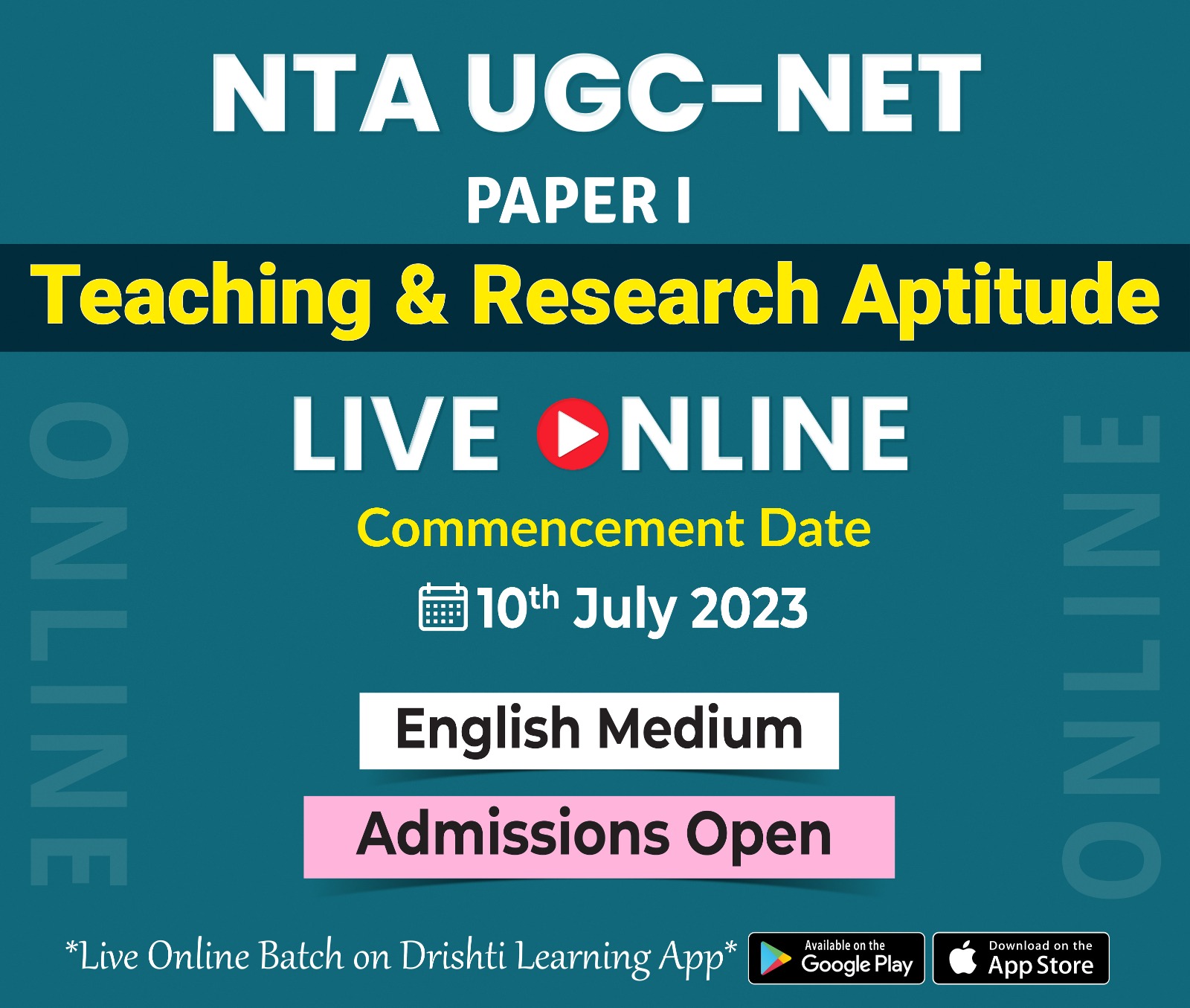
Governance
Zero FIR
For Prelims: FIR provisions, Zero FIR, Cognizable offence, POCSO Act.
For Mains: FIR - Provisions, Supreme Court’s view
Why in News?
In recent incidents of violence and crime in Manipur, the concept of Zero First Information Report (FIR) has come to the forefront.
What is Zero FIR?
- About:
- Zero FIR is an FIR that can be registered by any police station, irrespective of jurisdiction, when it receives a complaint regarding a cognisable offence.
- No regular FIR number is assigned at this stage.
- After receiving the Zero FIR, the revenant police station registers a fresh FIR and starts the investigation.
- It is meant to help victims of serious crimes, especially women and children, to lodge a complaint quickly and conveniently, without having to go from one police station to another.
- It is also meant to ensure that the evidence and witnesses are not lost or tampered with due to delays in filing the complaint.
- It is transferred to the relevant police station where the offence has taken place or where the investigation has to be conducted.
- Legal Basis of a Zero FIR:
- Zero FIR was introduced after the recommendation of the Justice Verma Committee, which was set up after the 2012 Nirbhaya gangrape case.
- The provision of a Zero FIR is also supported by various judgments of the Supreme Court and High Courts.
- For instance, in Lalita Kumari vs Govt. of UP (2014), the Supreme Court held that registration of an FIR is mandatory when information discloses the commission of a cognizable offence.
- In Satvinder Kaur vs State (1999), the Delhi High Court held that a woman has the right to lodge her complaint from any place other than where the incident occurred.
What is First Information Report (FIR)?
- About:
- Written document prepared by the police upon receiving information about a cognizable offence.
- First step towards the investigation process.
- Sets in motion the probe and further actions by the police.
- Registration of FIR in Cognizable Offences:
- Section 154(1), CrPC allows police to register an FIR for cognizable offences.
- Failure to Register an FIR:
- Section 166A inserted into IPC based on Justice JS Verma committee's recommendation.
- Provides punishment for public servants failing to record information related to a cognizable offence.
- Punishment includes imprisonment of up to two years and a fine.
Cognisable and Non-Cognisable Offences
- Cognisable Offences:
- In cognisable offences, an officer can take cognizance of and arrest a suspect without seeking a court’s warrant to do so, if she has “reason to believe” that the person has committed the offence and is satisfied that the arrest is necessary on certain enumerated bases.
- Within 24 hours of the arrest, the officer must have detention ratified by a judicial magistrate.
- According to 177th Law Commission Report, cognisable offences are those that require an immediate arrest.
- Cognizable offences are generally heinous or serious in nature such as murder, rape, kidnapping, theft, dowry death etc.
- The FIR is registered only in cognizable crimes.
- Non-Cognisable Offences:
- In case of a non-cognizable offence, the police cannot arrest the accused without a warrant as well as cannot start an investigation without the permission of the court.
- The crimes of forgery, cheating, defamation, public nuisance, etc., fall in the category of non-cognizable crimes.
UPSC Civil Services Examination Previous Year Question (PYQ)
Prelims
Q. With reference to India, consider the following statements: (2021)
- Judicial custody means an accused is in the custody of the concerned magistrate and such an accused is locked up in a police station, not in jail.
- During judicial custody, the police officer in charge of the case is not allowed to interrogate the suspect without the approval of the court.
Which of the statements given above is/are correct?
(a) 1 only
(b) 2 only
(c) Both 1 and 2
(d) Neither 1 nor 2
Ans: (b)
- In Judicial custody, an accused is in the custody of the concerned Magistrate and lodged in jail. While in the case of police custody, an accused is locked up in a police station. Hence, statement 1 is not correct.
- During judicial custody, the police officer in charge of the case may interrogate the suspect but with prior permission from the magistrate. In the case of police custody, the police officer can interrogate the suspect but must produce him before the court within 24 hours. Hence, statement 2 is correct.
- Therefore, option (b) is the correct answer.

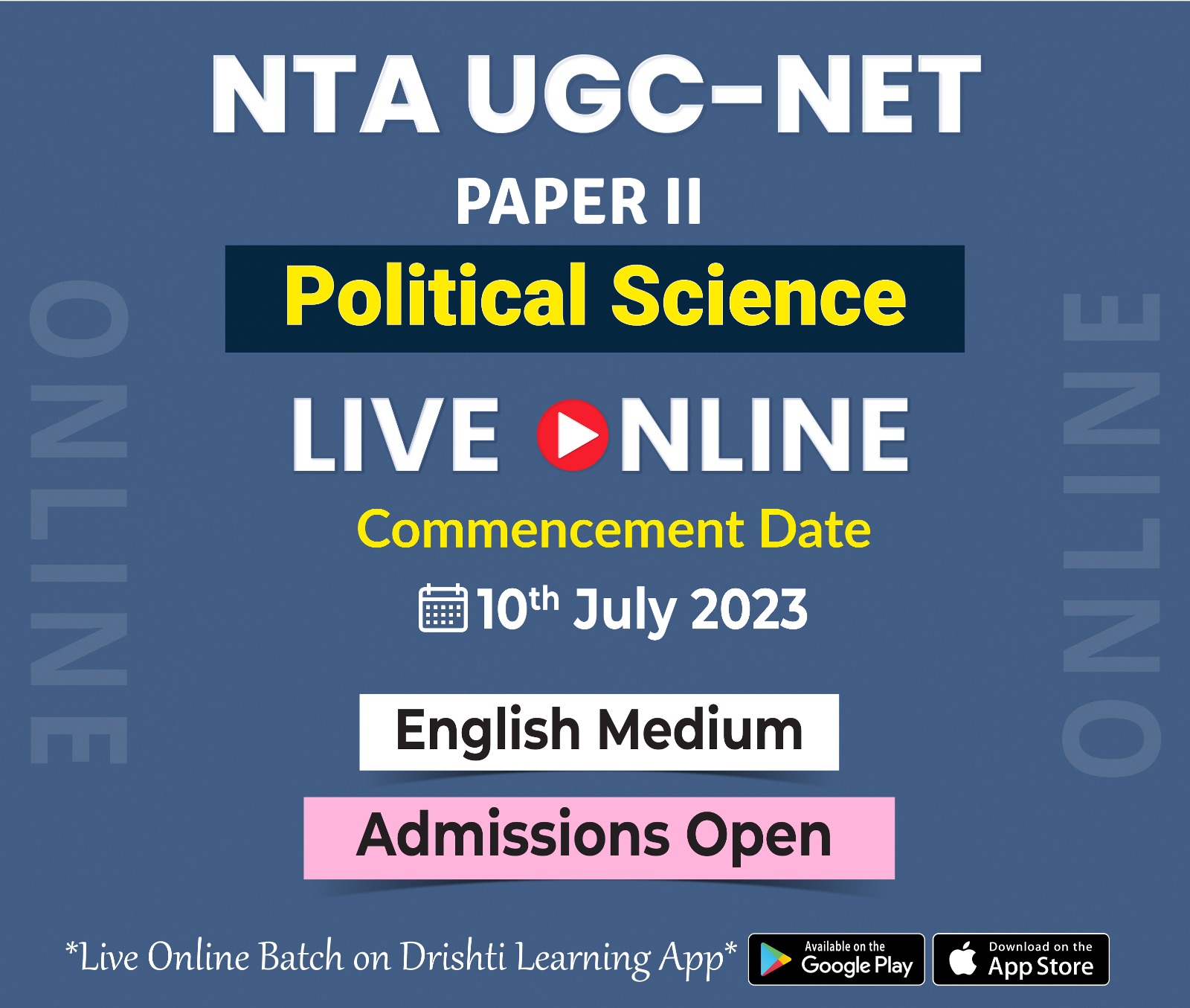
Governance
Concerns Related to Scientific Publishing
For Prelims: Concerns Related to Scientific Publishing, National Research Foundation, One Nation, One Subscription, Global South.
For Mains: Concerns Related to Scientific Publishing.
Why in News?
The recently approved National Research Foundation is seen as a leading voice for accessible, equitable, and fiscally responsible Scientific-Publishing.
- Communicating research is an integral part of scientific endeavor. It advances scientific understanding and bridges science and society.
What is the Process of Scientific-Publishing?
- Academic Publishing:
- Academic publishing starts with scientists submitting their research findings to journals.
- These manuscripts undergo peer review, where experts provide voluntary comments to ensure rigorous and validated research.
- After acceptance, the paper is published either online or in print, making the work accessible to the wider community.
- Pay to Read Model:
- Traditional academic publishing relies on a 'pay to read' model, where libraries and institutes pay fees to access published research.
- This system restricts access to scientific material, particularly in the Global South, where institutions may struggle to afford subscription fees.
- Pay to Publish Model:
- An alternative approach is the gold open-access model, where authors pay an Article Processing Charge (APC) to make their work freely available online.
- While this promotes open access, it has raised concerns about financial implications for researchers.
- An alternative approach is the gold open-access model, where authors pay an Article Processing Charge (APC) to make their work freely available online.
What are the Issues Related to Scientific Publishing in India?
- Profits from Public Money:
- Academic publishing is a lucrative industry, with a worldwide revenue of USD 19 billion and wide profit margins of up to 40%.
- The issue lies in the fact that these profits are derived from public funds but directed towards a select few companies, whereas academic scientific research is intended to be a non-profit endeavour.
- India's research funding has seen modest increases and stagnation, making the high APCs of Gold Open-Access (OA) journals a challenge for scientists.
- Gold OA is a type of open-access publishing model that allows unrestricted and immediate access to scholarly articles online without any subscription or payment barriers.
- Predatory Publishing:
- India faces challenges with predatory publishing. Predatory journals exploit the "pay-to-publish" model without providing adequate peer review and editorial services, resulting in low-quality publications that could undermine the credibility of Indian research.
- Lack of Open Access:
- Access to scientific research papers often remains restricted due to subscription-based models or expensive paywalls.
- This hampers the dissemination of knowledge and collaboration among researchers.
- Plagiarism and Ethics:
- Some researchers, due to various reasons, resort to plagiarism or other unethical practices, which can degrade the quality and reliability of Indian research publications.
- Funding Constraints:
- Limited funding and resources for research and publishing can lead to challenges in meeting publication costs, including article processing charges for open-access journals.
- Research Evaluation:
- There has been an overemphasis on journal impact factor as a measure of research quality, which may encourage researchers to publish in high-impact journals without considering the relevance or contribution of their work.
Is there any Workaround for the Cost?
- The government is exploring alternatives, such as 'One Nation, One Subscription,' which provides access to scholarly publications at a fixed cost but may increase commercial publishers' monopoly.
- Another approach is to shift from open access to open publishing, establishing a freely accessible and high-quality online repository managed by professionals.
- This repository allows continuous evaluation and engagement with reviews from experts and the public, moving away from numerical metrics for academic research evaluation.
Conclusion
- India's efforts to rethink academic publishing can lead the world by prioritizing equitable access to research.
- By implementing innovative models and leveraging the newly approved National Research Foundation, India can make strides towards accessible and transformative research publishing, benefiting not only its scientific community but society at large.

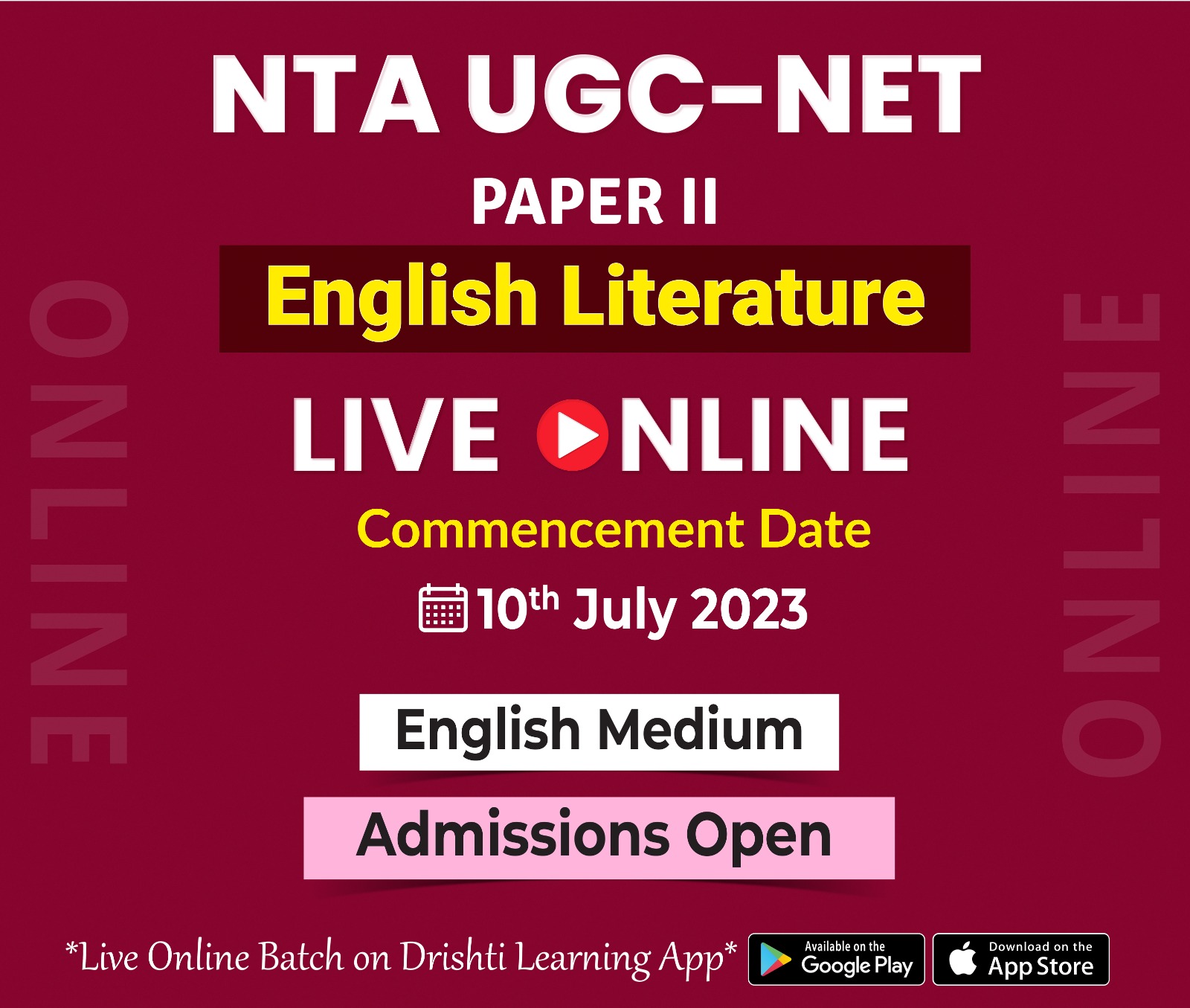
Important Facts For Prelims
India Energy Security Scenarios 2047 V3.0
Why in News?
NITI Aayog unveiled the latest version of the India Energy Security Scenarios (IESS) 2047 V3.0, an open-source tool designed to evaluate the integrated impact of various green energy policies of the Government of India.
- The baseline for the tool has been set at 2020 and is continually calibrated up to 2022, ensuring the accuracy of its predictions.
- NITI Aayog also released the India Climate Energy Dashboard (ICED) 3.0.
Note:
- ICED is the country's one-stop platform for near real-time data on the energy sector, climate, and related economic datasets based on government published sources.
What are the Key Features and Functionality of IESS 2047 V3.0?
- Comprehensive Scope: This tool assesses the demand and supply of energy in the country, considering policies related to alternative energy resources like Green Hydrogen Mission, Renewable Purchase Obligations, PM-KUSUM, Offshore wind strategy, among others.
- Environmental Impact Analysis: By analyzing emissions, cost, land, and water requirements up to 2047, IESS 2047 aims to steer India towards a sustainable and net-zero energy future.
- Open-Source and User-Friendly: The tool is open-source, easily downloadable, and user-friendly, encouraging accessibility and engagement from researchers, think tanks, and the public.
- IESS 2047 allows users to generate personalized pathways, tailored to specific factors like industry, services, agriculture, population, urbanization, and end-use energy demand.
- Reducing External Dependency: By providing reliable estimates of the country's energy needs, IESS 2047 helps reduce India's reliance on external agencies.
India’s Panchamrit Goal:
- Reach 500 gigawatts (GW) of non-fossil energy capacity by 2030.
- Meet 50% of India’s energy requirement from renewable energy (RE) sources by 2030.
- Reduce the carbon intensity of the economy by 45% below 2005 levels by 2030.
- Reduce total projected carbon emissions by 1 billion tonnes by 2030.
- Achieve the target of net-zero emissions by 2070.
What are the Initiatives Shaping India’s Energy Transition?
- Faster Adoption and Manufacturing of (Hybrid &) Electric Vehicles (FAME)
- Pradhan Mantri Sahaj Bijli Har Ghar Yojana (SAUBHAGYA)
- Green Energy Corridor (GEC)
- National Solar Mission (NSM)
- National Biofuels Policy and SATAT
- Small Hydro Power (SHP)
- International Solar Alliance (ISA)
UPSC Civil Services Examination, Previous Year Question (PYQ)
Q. With reference to the Indian Renewable Energy Development Agency Limited (IREDA), which of the following statements is/are correct? (2015)
- It is a Public Limited Government Company.
- It is a Non-Banking Financial Company.
Select the correct answer using the code given below:
(a) 1 only
(b) 2 only
(c) Both 1 and 2
(d) Neither 1 nor 2
Ans: (c)


Important Facts For Prelims
Ludwigia peruviana Threatens Elephant Habitats in Tamil Nadu
Why in News?
An Invasive weed called Ludwigia peruviana is posing a significant threat to elephant habitats and foraging areas in Valparai, Tamil Nadu.
What is Ludwigia peruviana?
- About:
- Ludwigia Peruviana, also known as primrose willow, is originally native to Central and South America.
- It is an aquatic plant that was likely introduced as an ornamental species due to its attractive pale yellowish flowers.
- However, its introduction to new regions has resulted in it becoming an invasive weed, causing ecological disruptions in various swampy areas worldwide.
- Characteristics:
- Ludwigia Peruviana grows relatively tall, reaching a height of about 12 feet.
- As an aquatic plant, it thrives in wetlands and water bodies.
- It grows faster than many other harmful weeds, and the pre-monsoon temperature and monsoon rains contribute to its rapid growth and spread.
- Impact on Elephants and Wildlife and Biodiversity:
- The invasion of Ludwigia Peruviana poses a significant threat to elephant habitats, disrupting the growth of essential food sources for elephants and other plant-eating animals.
- The spread of this invasive weed also impacts the overall biodiversity of invaded areas, leading to the loss of native plant species and potentially forcing wildlife to move to other areas, resulting in negative interactions with humans.
- Challenges in Prevention:
- Ludwigia Peruviana is listed as one of the 22 priority invasive plants in Tamil Nadu, emphasizing the urgency of containment and control measures.
- The elimination of Ludwigia presents a unique challenge compared to other invasive plants because it grows in swamps, limiting the use of machinery to tackle the problem without damaging the ecosystem further.
- Manual removal is tricky because the plant breaks easily and new growth can emerge from root or broken stems.
- Hand-pulling and digging roots can be effective.


Rapid Fire
Rapid Fire Current Affairs
Meri Maati Mera Desh Campaign
The Indian government has initiated the 'Meri Maati Mera Desh' campaign as part of the 'Azadi Ka Amrit Mahotsav' celebration of 75 years of Independence.
- Soil collected from various parts of the country will be used to develop the Amrit Vatika Garden along the Kartavya Path in Delhi.
- Events planned at different levels, from panchayat and village to state and national levels.
- Shilaphalakam (memorial plaque) with the names of bravehearts who made the supreme sacrifice to be installed.
- Pledge taken by people affirming their commitment to the country.
- Planting 75 saplings of indigenous species in every gram panchayat or village under 'Vasudha Vandhan'.
- 'Veeron Ka Vandan' to felicitate freedom fighters and families of deceased freedom fighters.
Read more: Azadi Ka Amrit Mahotsav
India's Unorganized Sector Workers
Recently, the Union Minister of State for Labour and Employment has mentioned about various initiatives to address the India's Unorganized Sector Workers in a written reply in the Lok Sabha.
- As per the Economic Survey, 2021-22, total number of people working in the unorganized sector is around 43.99 crores during 2019-20.
- The government introduced the 'Aatmanirbhar Bharat' package with a fiscal stimulus of over Rs. 27 lakh crores to mitigate Covid-19's impact on workers and the economy.
- The 'Aatmanirbhar Bharat Rojgar Yojana (ABRY)' incentivized job creation and restoration, benefiting 60.3 lakh beneficiaries.
- To address the challenges faced by unorganized workers who returned to their home states, the 'Pradhan Mantri Garib Kalyan Rojgar Abhiyan' was initiated in 116 districts to offer employment and livelihood opportunities.
- The 'Atal Beemit Vyakti Kalyan Yojana (ABVKY)' scheme provided increased relief to insured persons who lost their jobs, offering financial support during the crisis.
- The 'Pradhan Mantri Garib Kalyan Anna Yojana (PMGKAY)' scheme, 5 kg of food grain per person was provided free of cost.
Read more: Covid-19 pandemic, Aatmanirbhar Bharat
Fluoromix
Scientists from the University of Oxford developed a safer and less energy-intensive method to obtain fluorine atoms.
- Fluorine comes from a calcium salt called calcium fluoride, or fluorspar. Fluorspar is mined and then treated with sulphuric acid at a high temperature to release hydrogen fluoride.
- Fluorine is a highly reactive element used to make fluorochemicals, which in turn are used to produce plastics, agrochemicals, lithium-ion batteries, and drugs.
- By taking inspiration from the natural calcium phosphate biomineralisation process found in bones and teeth, the researchers created a compound called Fluoromix by milling fluorspar with potassium phosphate, avoiding the use of the toxic and corrosive hydrogen fluoride.
- Fluoromix proved highly effective, yielding around 50 different fluorochemicals with up to 98% efficiency when combined with organic compounds, presenting significant promise for industries relying on fluorochemicals.
Silver Cockscomb
Silver cockscomb, also known as lagos spinach, is a troublesome weed that can spread rapidly and hinder the growth of other crops.
- However, the Soliga tribe in Karnataka's Chamarajanagara district considers it a nutritious leafy green vegetable, using it in traditional dishes like massanne and ullsoppu sambar.
- Scientific studies have shown that silver cockscomb has beneficial properties, including antibacterial activity, high nutrient content (vitamin E, calcium, and iron), and lower levels of harmful substances like oxalic acid and phytic acid.
- This weed, prevalent in regions like South and Southeast Asia, Latin America, and parts of the US and Australia, has been used by communities worldwide for medicinal purposes and as a wild vegetable and fodder.
- By documenting and exploring traditional knowledge, silver cockscomb could potentially be recognized as a valuable superfood.
Read more: Scheduled Tribes in Karnataka,



